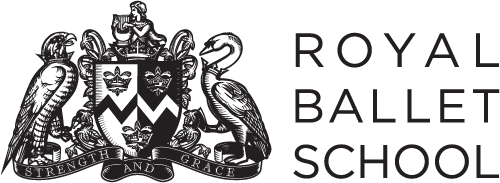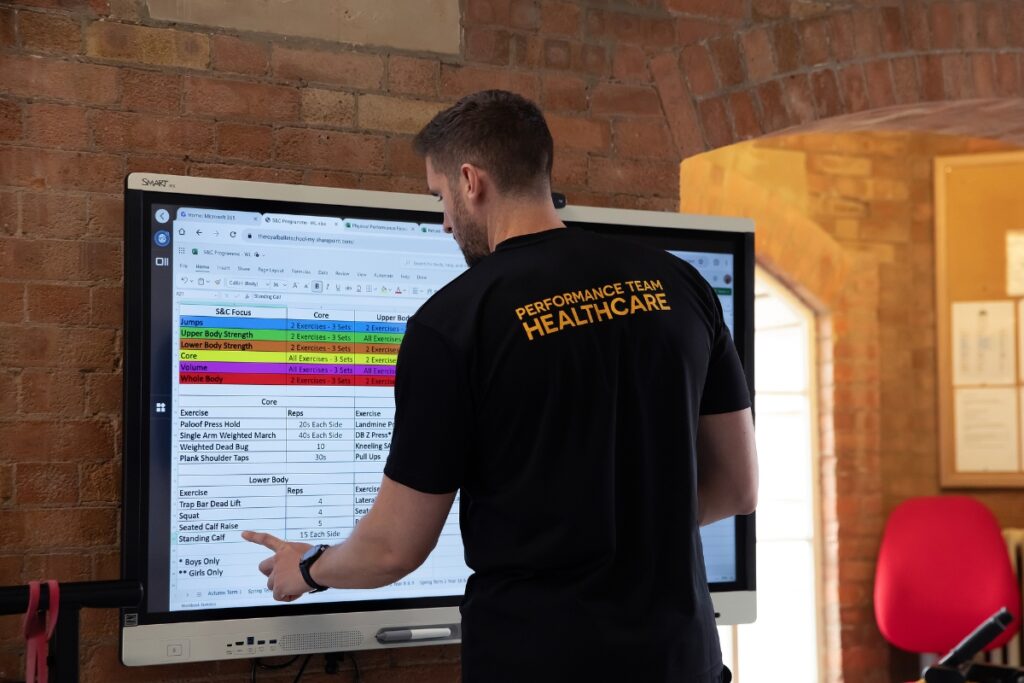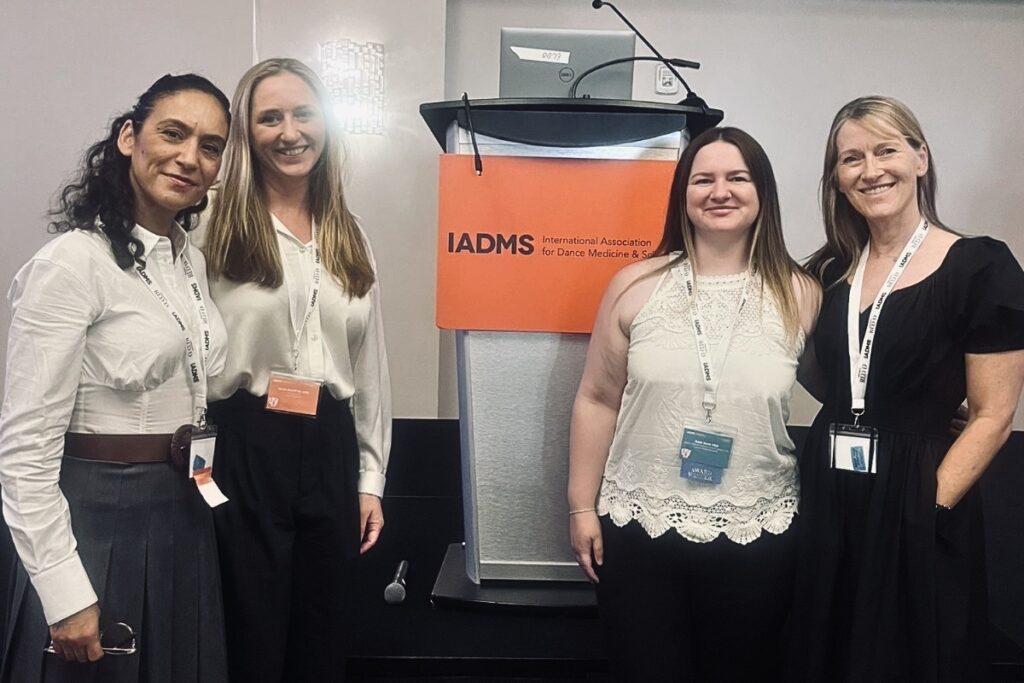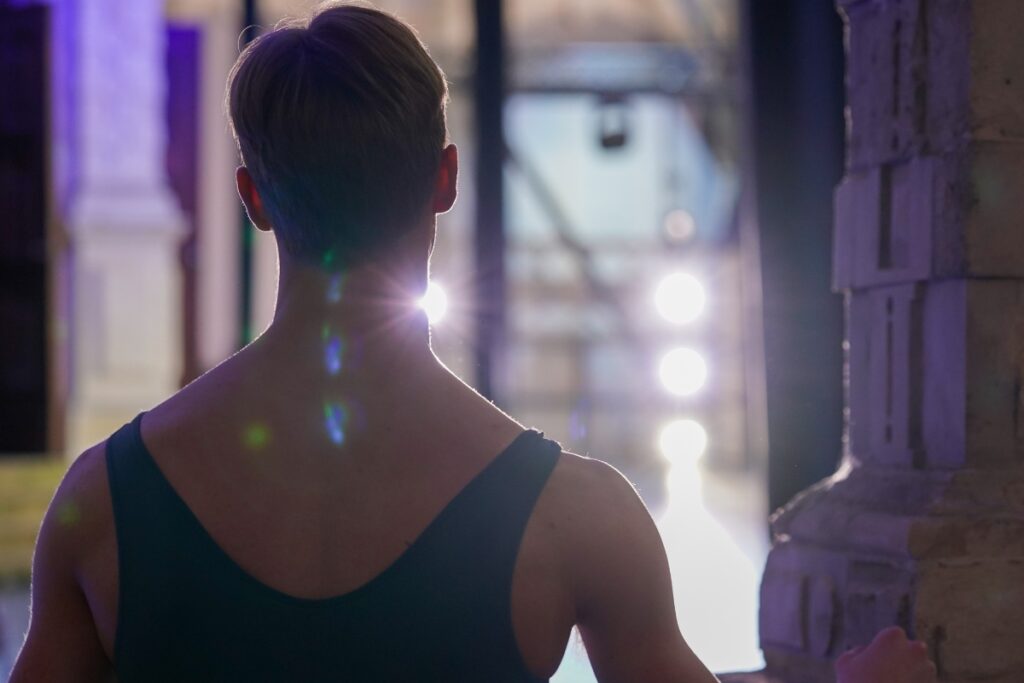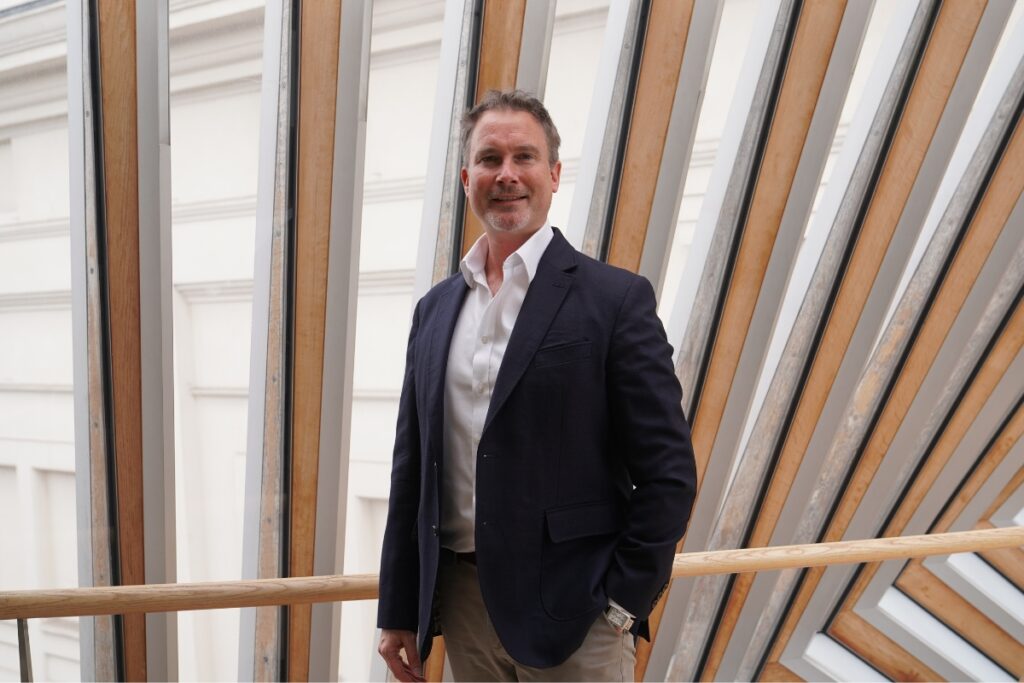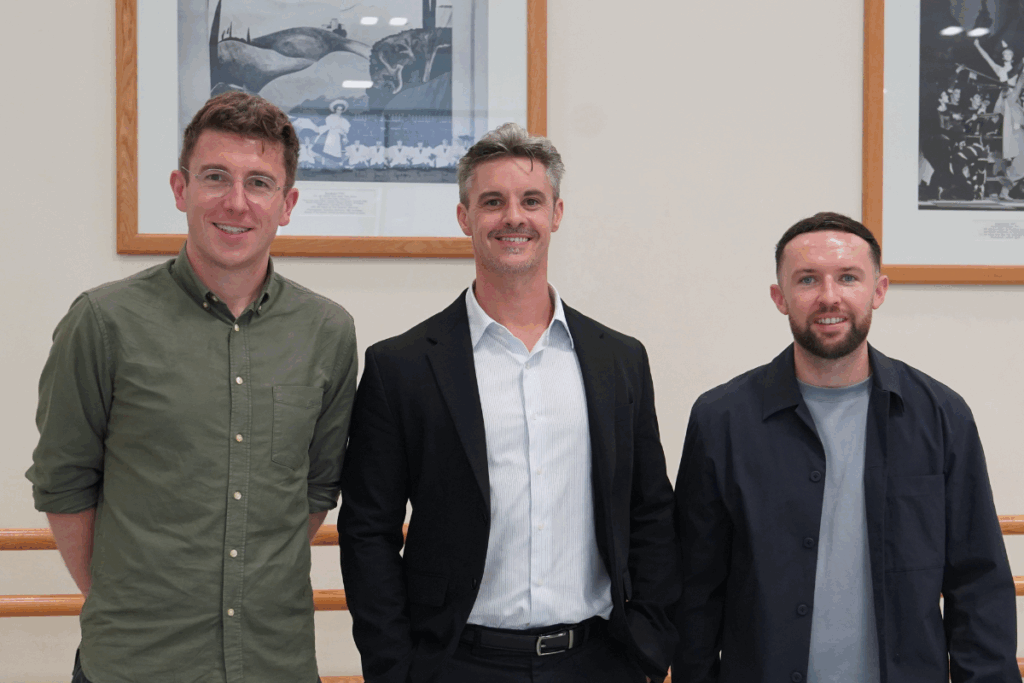Physical Development Lead Chris McCann shares the School’s innovative healthcare research at international conferences
This spring, The Royal Ballet School’s Physical Development Lead Chris McCann shared our world-leading healthcare practices at various international conferences. His presentations demonstrated how our emphasis on strength and conditioning in dance training is setting the foundation for best practices across the industry.
Chris and former Head of Healthcare Karen Sherriff took part in an international impact project, presenting at Palucca University of Dance Dresden, Zurich University of the Arts and Staatsballet Berlin. Chris and Karen explained how the research conducted at the School and The Royal Ballet, in collaboration with their University of Essex partners Jamie Tallent and Louis Howe, inform their daily applied practice.
Chris also presented at the Vald Return to Performance conference at Loughborough University, discussing the physical demands of ballet, the School’s testing procedures and pushing the boundaries of young dancer training. ‘There is so much scope for change within our environment,’ he said, ‘and it is incredibly rewarding to be leading the way for how dancers train.’
The presentations included research lead by our Strength and Conditioning Coach, Jamie Harding, in collaboration with the University of Essex. Jamie’s PhD focuses on the efficacy of our physical profiling tests, the physical changes of our students throughout the School and the utilisation of microdosing within strength and conditioning. Jamie’s research has increased student access to strength and conditioning, which results in injury prevention and physical performance improvement.
The research also builds upon the current and existing studies conducted by Niall MacSweeney at White Lodge on identifying and mitigating injury risk in pre-professional dancers. Additionally, Strength and Conditioning Coach Adam Mattiussi and Royal Ballet and Opera Sport Scientist Joe Shaw spoke on the SciDance podcast in 2022 about their PhD research into training loads, jumping and landing mechanisms and injury risks using data collected at the School.
These conferences also allowed Chris to learn from other institutions spanning different athletic disciplines and resources. At the Vald conference, he interacted with researchers working in football, rugby, and Olympic sports, who he says were intrigued to learn about the physical training demands in the art form.

Chris McCann with White Lodge students
At the three dance conferences, he recognised the numerous resources that The Royal Ballet School offers students, healthcare staff and dance scientists. ‘Palucca University, Zurich University and Staatsballet Berlin don’t have the number of staff we do. They don’t have the same equipment we have, like force decks to complete our objective testing. They don’t have as big a healthcare team as we do to look after their students. So you really do feel like you’re in a position of privilege here.’
Moving forward, Chris emphasises that monitoring student training in a scientific way is key for continued innovation in dance training. With increased objective data gathering on day-to-day changes and how dancers respond to different training sessions, the healthcare team can continue to mitigate injury risk and support dancer longevity.
‘I think the more that students are exposed to that thorough high-performance training environments and progress through the school, [strength and conditioning] becomes the norm, second nature. It is still a very new concept to the world of ballet and to the School.
One of our aims is to create self-sufficient dancers because when they graduate to a company, they’re not going to have the same provision in their timetable as they do here. They need to be able to do it on their own, so that’s probably one of the biggest lessons that we hope students take away from their time at the School.’
The strength and conditioning team also adapt their training to make it accessible for different age groups with insight from Jamie’s PhD research. Year 7 is a play-based model that introduces fundamental movement skills. The coaches introduce weights and external loads to Years 8 and 9. Exercises become more complex with heavier loads in Years 10 and 11. Upper school students have access to more strength and conditioning to improve athletically, but the coaches also monitor how the students handle a higher volume of training in the studio and in the weight room.
‘A big part of the School’s ideals and visions is to be world-leading and push the boundaries of what traditional training looks like for young dancers. Hopefully future generations of young dancers that enter the School are training more scientifically and more effectively.’
The School’s healthcare team is an invaluable resource, and we are proud that Chris is representing their innovative research on the international stage.
